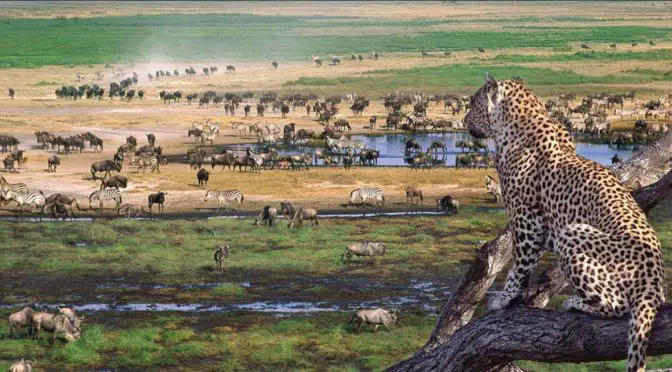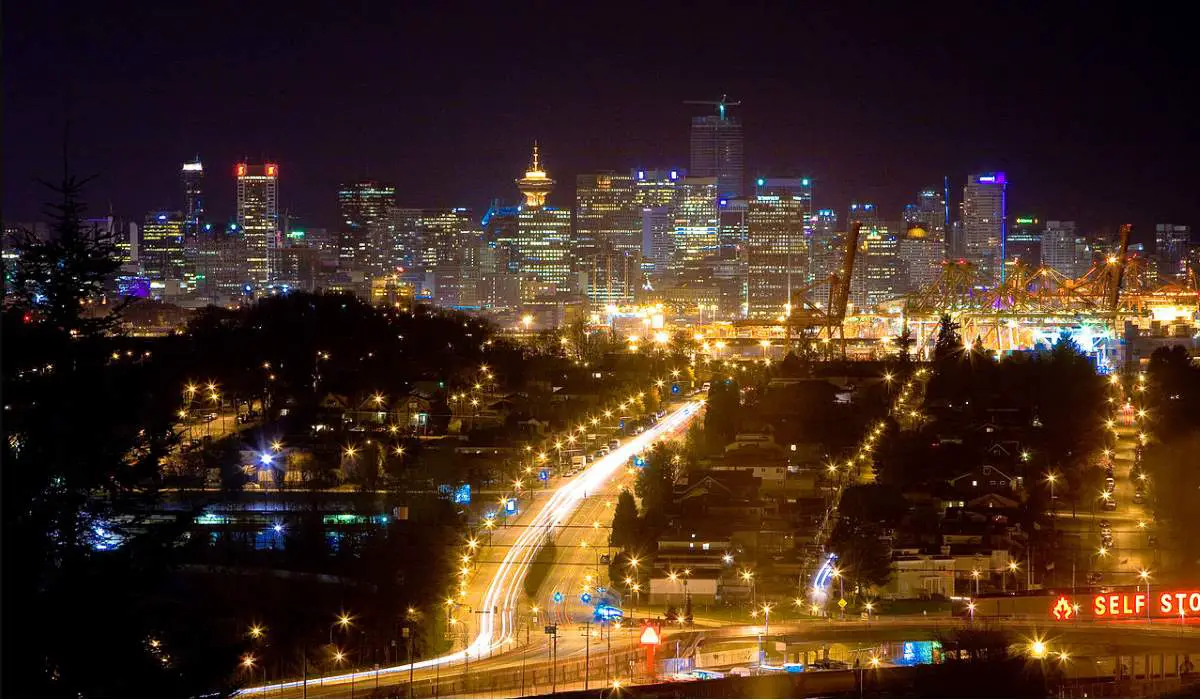Around 4 million years ago, the ancestors of humans and chimpanzees diverged, genetic evidence suggests. What, if the last common ancestor of chimpanzees and humans would suddenly die before giving birth to any babies? What would the Earth be like if humans had never existed?
Researchers from Aarhus University in Denmark demonstrated that the Earth without humans would resemble Serengeti, a geographical region in Africa that hosts the largest terrestrial mammal migration in the world.
The researchers also released a world map of how animal diversity should be. Even Europe would probably be home to animals like elephants and rhinoceroses. Today, only Africa (and only in some places like Serengeti) has such a high density of mammals – but it is not due to the ideal climate and environment. The research suggests that the animal diversity we see today largely reflects past human activities.
Professor Jens-Christian Svenning at the Department of Bioscience at Aarhus University says: “Northern Europe is far from the only place in which humans are reduced to the diversity of mammals, it’s a worldwide phenomenon, and in most places, there’s a very large deficit in mammal diversity relative to what it would naturally have been.”

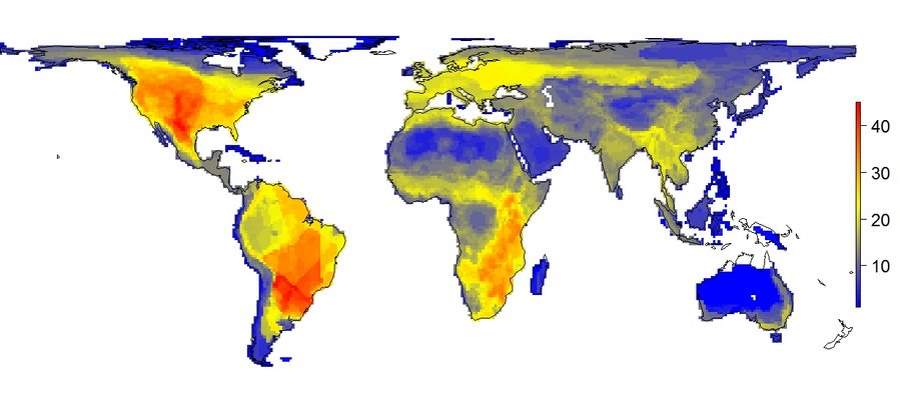
The lead author of the study, Postdoctoral Fellow Søren Faurby, Department of Bioscience, Aarhus University explains: “Most safaris today take place in Africa, but under natural circumstances, as many or even more large animals would no doubt have existed in other places, e.g. notably parts of the New World such as Texas and neighboring areas and the region around northern Argentina-southern Brazil. The reason that many safaris target Africa is not that the continent is naturally abnormally rich in species of mammals. Instead, it reflects that it’s one of the only places where human activities have not yet wiped out most of the large animals.”
“The current high level of biodiversity in mountainous areas is partly due to the fact that the mountains have acted as a refuge for species in relation to hunting and habitat destruction, rather than being a purely natural pattern. An example in Europe is the brown bear, which now virtually only lives in mountainous regions because it has been exterminated from the more accessible and most often more densely populated lowland areas”.
What would the Earth be like if humans had never existed?
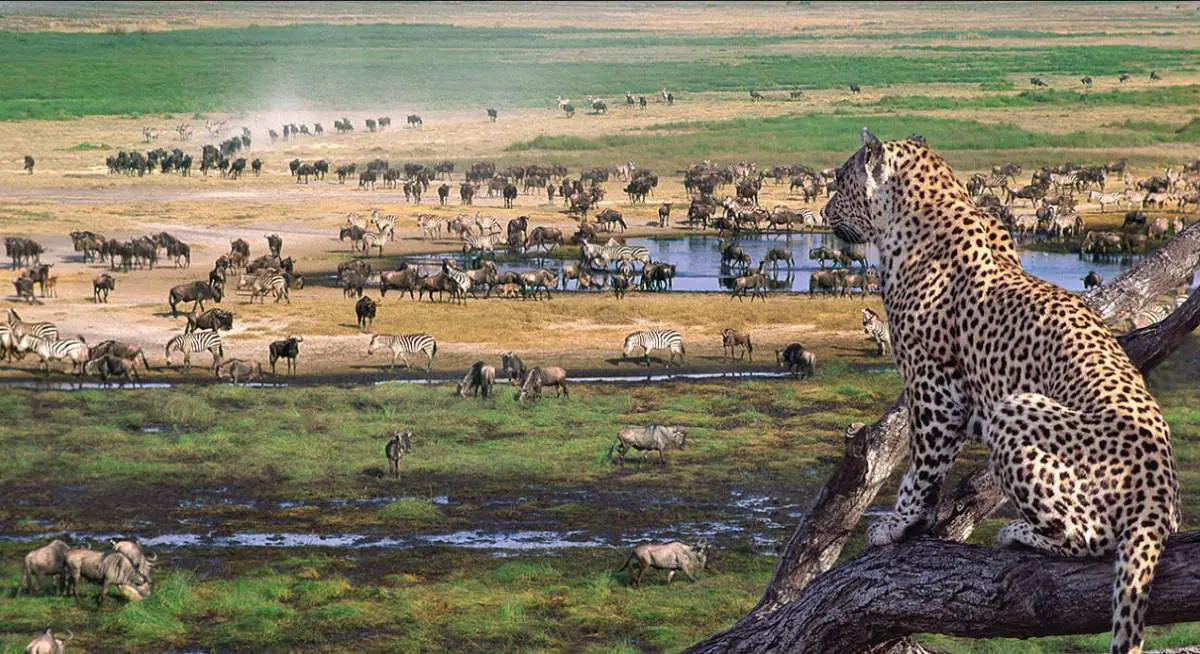
If humans had never existed, the Earth would have evolved quite differently, especially in terms of its wildlife, animal populations, and the environment. Based on the reference you provided and additional ecological and evolutionary principles, here are 15 hypothetical changes and characteristics that our planet might exhibit:
1. There would be greater biodiversity
In a world where humans never existed, one of the most striking changes would be a dramatic increase in biodiversity. Human activities, such as hunting, deforestation, and pollution, have led to the extinction or endangerment of countless species. Without these anthropogenic pressures, many of these species would not only survive but flourish. Forests, oceans, grasslands, and other ecosystems would host a vastly more diverse array of life.
This greater biodiversity isn’t just about the number of species; it would also mean a richer variety of genetic diversity within species, leading to more resilient and adaptable populations. The ecological interactions in such a richly diverse world would be complex and dynamic, with a balance maintained by natural processes rather than human intervention. This vibrant tapestry of life would offer a glimpse into a truly wild and unaltered natural world, showcasing the full spectrum of evolutionary creativity and ecological interdependence.
2. Large mammals would flourish
In an Earth untouched by humans, the flourishing of large mammals would be a prominent feature. These magnificent creatures, which have faced severe threats due to human activities such as hunting and habitat loss, would thrive in various ecosystems across the globe. Regions like Europe, North America, and parts of Asia would potentially host herds of elephants, prides of lions, and other large fauna, similar to the wildlife diversity we currently observe in some parts of Africa.
The presence of these large mammals would have profound effects on the environment. They serve as keystone species, playing crucial roles in maintaining the ecological balance. Elephants, for instance, are known as ecosystem engineers, shaping their habitat in ways that benefit numerous other species. The survival and proliferation of these large mammals would lead to more robust ecosystems, with intricate food webs and natural processes driving ecological dynamics. This resurgence and dominance of large mammals would exemplify a world where the grandeur of nature’s giants is fully realized, unhindered by human impact.
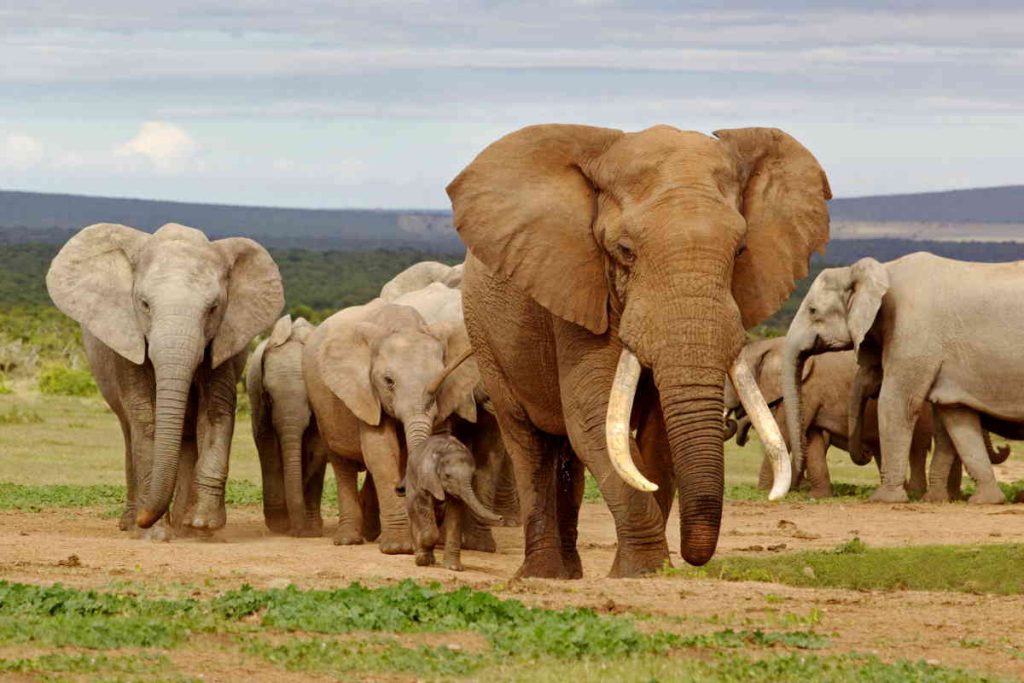
3. Predator-prey dynamics would be healthier
In a world devoid of human influence, the natural predator-prey dynamics would be a critical aspect of ecosystem health and stability. Without human-induced disruptions such as hunting, habitat fragmentation, or the introduction of non-native species, these dynamics would follow the rhythms and rules set by nature itself. Predators play an essential role in controlling the population of prey species, preventing overgrazing, and helping maintain the balance of various ecosystems. This natural regulatory mechanism would ensure that no single species dominates excessively, thereby preserving the diversity and richness of ecosystems.
Moreover, predators often target the sick or weak individuals of prey populations, which can contribute to the overall health and genetic robustness of these species. In the absence of humans, these interactions would evolve without external pressures, leading to a more intricate and finely tuned balance. Such a scenario would foster environments where each species, from the smallest insect to the largest carnivore, has a role, contributing to the overall integrity and resilience of ecosystems. The undisturbed predator-prey relationships would be a testament to the sophistication and effectiveness of natural ecological processes.
4. If humans had never existed, there would be no domesticated animals
In a world where humans never existed, the concept of domesticated animals as we know them would be absent. Species such as dogs, cats, cows, and horses, which underwent significant changes through selective breeding by humans, would either not exist or persist only in their original, wild forms. Dogs, for example, would not have evolved from their wolf ancestors into the diverse breeds we know today. Instead, these ancestral species would continue their natural evolution, uninfluenced by human needs and preferences.
This lack of domestication would have notable ecological implications. Wild ancestors of these animals would play their natural roles in the ecosystem, contributing to biodiversity and ecological balance. The ecological niches currently filled by domesticated species would be occupied by other wildlife, leading to different wildlife dynamics and interactions. Additionally, without domesticated herbivores like cows and sheep, landscapes would not be shaped by grazing as they are in many parts of the world today. Overall, the absence of domesticated animals would significantly alter the composition of wildlife populations and the functioning of ecosystems, reflecting a more untamed and natural world.

5. Earth’s forest cover would be greater
In a scenario where humans never existed, the Earth’s landscapes would be markedly different, particularly in terms of forest cover. Vast areas that are currently utilized for agriculture or urban development would remain as forests, contributing to a significantly greater global forest cover. These untouched forests would not only be more expansive but also more diverse, encompassing a wide range of forest types from tropical rainforests to temperate deciduous and boreal forests.
This extensive forest cover would serve as a haven for countless species, supporting rich ecosystems teeming with life. The dense foliage and varied structures of these forests would create numerous habitats and microhabitats, catering to the needs of a diverse array of species. Moreover, forests play a crucial role in the Earth’s climate system and carbon cycle. With more forests, there would be a greater capacity for carbon sequestration, potentially leading to different atmospheric carbon dioxide levels and climate conditions compared to our current world.
Furthermore, these vast forests would be the engines of biodiversity, driving evolution and speciation. They would also maintain the hydrological cycle, with implications for climate regulation, water purity, and soil conservation. The presence of uninterrupted forest landscapes would illustrate the profound impact of human absence on the planet’s green cover, showcasing a world where nature’s complexity and beauty are expressed in its fullest form through lush and thriving forests.
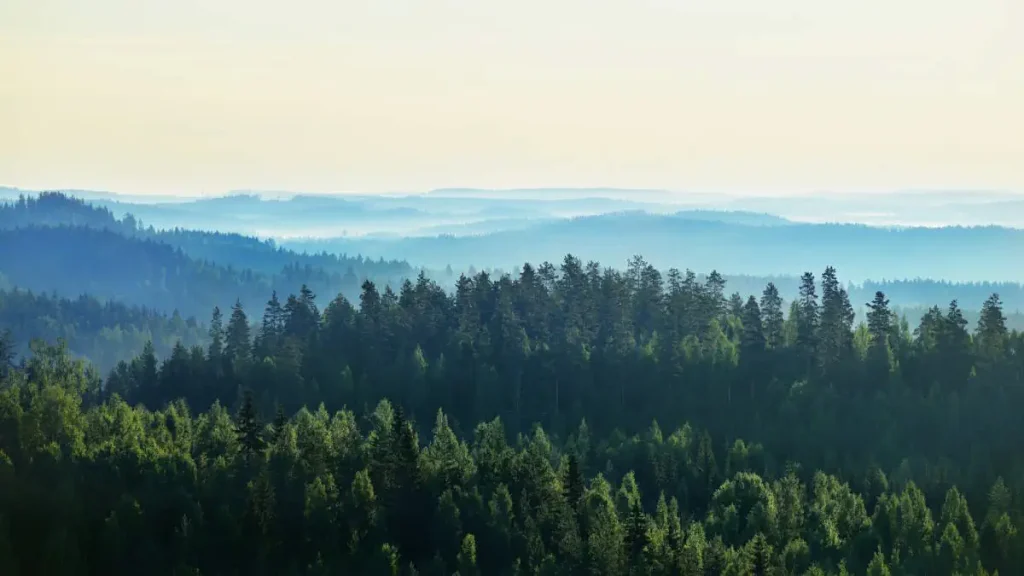
6. Wetlands and grasslands would be more prevalent
In a world untouched by human intervention, wetlands and grasslands would occupy a more prominent role in the planet’s ecosystems. These areas, frequently drained, converted for agricultural use, or developed for urban expansion by humans, would exist in their natural, undisturbed state. As a result, wetlands and grasslands would be more prevalent and extensive, covering large areas that are currently altered or nonexistent due to human activities.
Wetlands, known for their rich biodiversity, serve as critical habitats for a myriad of species, including numerous birds, amphibians, fish, and invertebrates. In their natural state, these wetlands would be thriving ecosystems, playing key roles in water purification, flood control, and carbon sequestration. They would also act as crucial breeding grounds and migration stopovers for many bird species.
Similarly, grasslands, which are among the most converted ecosystems for agriculture worldwide, would span vast areas. These grasslands support a diverse range of flora and fauna, including many species of grasses, wildflowers, insects, birds, and large herbivores. In addition to their ecological value, grasslands play an important role in soil formation and preservation, carbon storage, and maintaining the water cycle.
The presence of widespread, undisturbed wetlands and grasslands would not only contribute to global biodiversity but also demonstrate the natural resilience and adaptive capabilities of these ecosystems. Their existence in a hypothetical human-free world would offer a glimpse into the Earth’s ecological diversity and complexity, showcasing the intricate interplay between different ecosystems and the species they support.
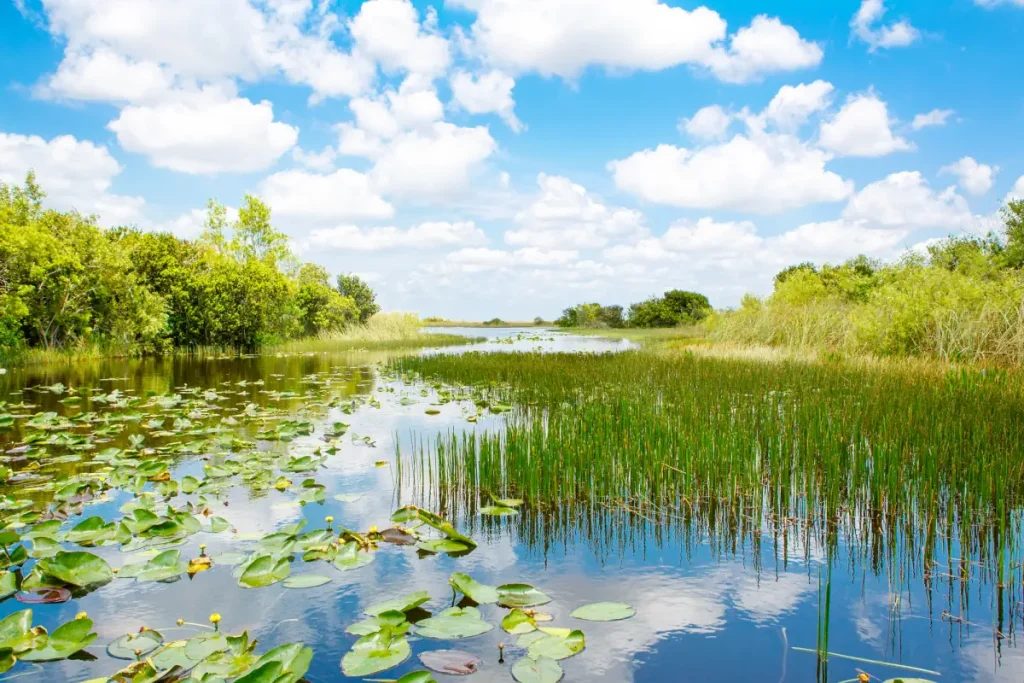
7. Coral reefs would thrive
Coral reefs, some of the most diverse and vital ecosystems on the planet, would likely be in a much healthier state if humans had never existed. Without the detrimental impacts of human-induced climate change and pollution, these intricate marine structures would thrive, offering a stark contrast to the current challenges they face.
Coral reefs are known for their incredible biodiversity, supporting an immense variety of marine life. In the absence of threats like ocean acidification, rising sea temperatures, and pollution – all consequences of human activity – these reefs would provide robust and stable habitats for countless species of fish, invertebrates, and marine mammals. The complex structures of healthy coral reefs offer shelter, breeding grounds, and hunting opportunities for a myriad of organisms, playing a crucial role in marine food webs.
Furthermore, thriving coral reefs would have a profound impact on the overall health of the oceans. They are essential for nutrient cycling, maintaining water quality, and protecting coastlines from erosion and storm damage. Healthy reefs also contribute to the productivity of nearby ecosystems, such as mangroves and seagrass beds, creating a domino effect of ecological benefits.
The flourishing of coral reefs in a human-free world would not only signify a vibrant and diverse marine environment but also demonstrate the intrinsic resilience of these ecosystems. It would be a world where the kaleidoscope of life beneath the waves is preserved and allowed to flourish, showcasing the ocean’s ability to sustain a rich and dynamic array of life in a balanced, natural state.
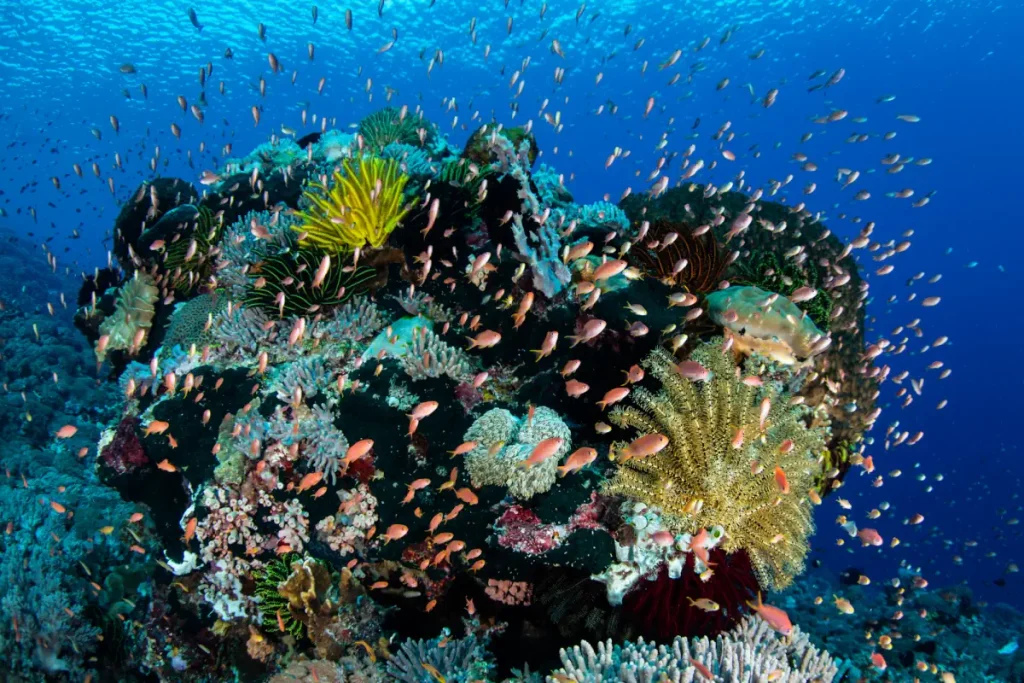
8. There would be no invasive species
If humans had never existed, the issue of invasive species, which has significantly altered ecosystems around the world, would be drastically minimized. Invasive species are often spread through human activities such as global trade, travel, and sometimes intentional introduction. Without these anthropogenic factors, ecosystems would be largely free from the disruptions caused by non-native species.
The introduction of invasive species can lead to significant ecological imbalances. They often outcompete native species for resources, alter habitats, and can even lead to the extinction of indigenous flora and fauna. In a world without human-mediated dispersal, native ecosystems would maintain their original compositions, with species coexisting as they have evolved over millennia.
The absence of invasive species would mean that ecological niches would be filled by native species, allowing for the preservation of natural food webs and interactions. This would support greater biodiversity, as native species, adapted to their specific environments, would thrive without the pressure of competing with aggressive invaders.
Additionally, the prevention of invasive species would safeguard the unique characteristics of different ecosystems, maintaining the distinctiveness of ecological regions around the world. This would ensure a richer global biodiversity, with each region maintaining its own suite of native plants, animals, and microorganisms, contributing to the overall health and stability of the planet’s ecological systems.
9. The absence of industrialization would mean a more balanced carbon cycle
The absence of industrialization and its associated emissions would lead to a more balanced natural carbon cycle. Human activities, particularly the burning of fossil fuels and deforestation, have significantly altered the carbon cycle, leading to increased levels of carbon dioxide (CO2) in the atmosphere. This increase is a major driver of global climate change.
Without human influence, the carbon cycle would function in a more equilibrium state. Forests, oceans, and other natural carbon sinks would operate without the excessive burden of human-produced CO2. These sinks absorb and store carbon, playing a crucial role in maintaining the balance of atmospheric carbon levels.
Forests, in particular, would cover more of the Earth’s surface in the absence of deforestation for agriculture and urbanization. These expanded forests would sequester large amounts of carbon, both in the trees themselves and in the soil, effectively reducing the concentration of CO2 in the atmosphere.
Oceans also play a significant role in the natural carbon cycle. Without the increased levels of CO2 caused by human activities, the acidification of ocean waters would be minimized, preserving the health of marine ecosystems, which are vital for carbon absorption.
This more balanced carbon cycle would likely result in lower atmospheric CO2 levels compared to the current situation. Such a scenario would have profound effects on the global climate, potentially leading to a more stable and cooler climate system than what we are experiencing today. This equilibrium would support diverse ecosystems and a rich variety of life, both on land and in the oceans.
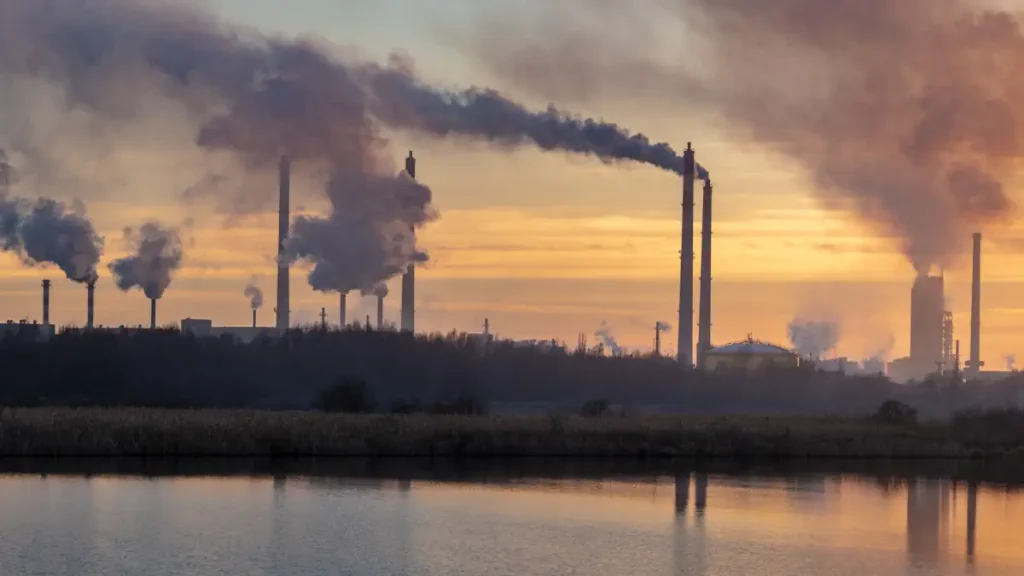
10. Oceanic ecosystems would be healthier
The oceans would be free from the impacts of overfishing, a significant issue that currently threatens marine ecosystems. As a result, ocean populations would be healthier and more balanced, reflecting the natural equilibrium of marine life.
Overfishing, driven by human demand for seafood, has led to the depletion of many fish stocks, disrupted food webs, and the decline of marine biodiversity. In the absence of this pressure, fish populations would maintain their natural sizes and age structures. This would allow for a more stable and diverse marine ecosystem, where predatory and prey species exist in a balanced ratio.
The health of ocean populations is not just about the number of fish; it also involves the genetic diversity within species, which is crucial for resilience to diseases and environmental changes. Without overfishing, this genetic diversity would be preserved, enhancing the overall robustness of marine species.
Moreover, a healthy ocean ecosystem has a cascading effect on the entire marine environment. Coral reefs, seagrass beds, and other vital habitats would thrive with the presence of balanced fish populations. These ecosystems are essential for the life cycles of many marine species, providing areas for feeding, breeding, and shelter.
Additionally, healthy fish populations play a crucial role in nutrient cycling and maintaining the clarity and quality of ocean waters. In a world without overfishing, the oceans would be vibrant ecosystems, teeming with life and supporting a rich tapestry of species, from the smallest plankton to the largest whales.
The oceans in such a world would demonstrate the intricate and interconnected nature of marine ecosystems, where each species plays a vital role in maintaining the health and balance of the oceanic environment.
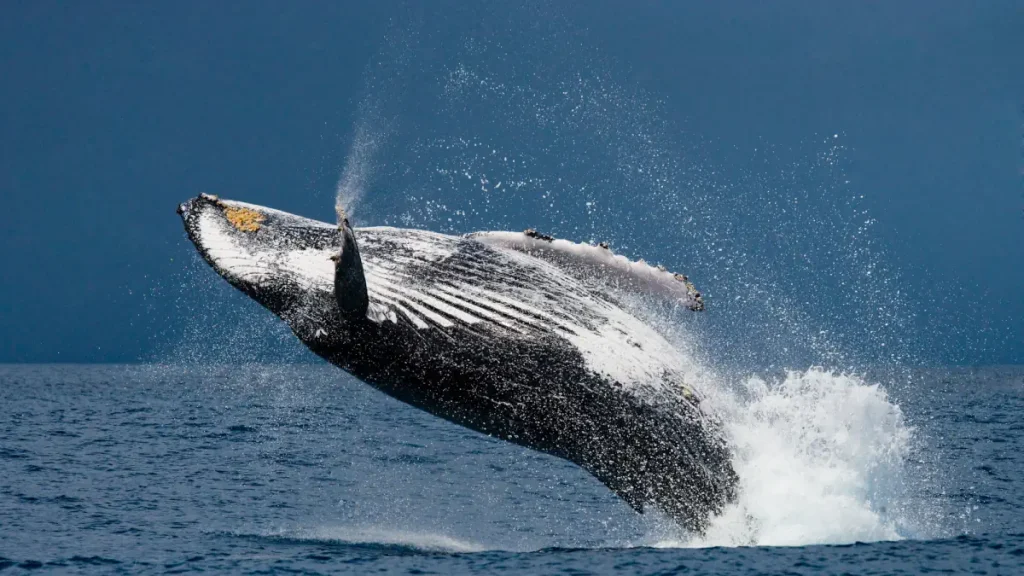
11. The absence of light and noise pollution would have a profound impact on wildlife and ecosystems
The absence of light and noise pollution would have a profound impact on wildlife and ecosystems. Light and noise pollution, both byproducts of urbanization and industrialization, disrupt natural behaviors and ecological processes, often with detrimental effects.
Light Pollution:
- Disruption of Circadian Rhythms: Many species rely on natural light cycles to regulate their circadian rhythms. Artificial light at night can disrupt these rhythms, affecting behaviors such as sleep patterns, feeding, and reproduction.
- Impacts on Nocturnal Species: Nocturnal animals, which are active during the night, can be particularly affected by light pollution. It can disorient them, make them more vulnerable to predators, and interfere with their ability to hunt.
- Alteration of Plant Growth: Plants rely on natural light patterns for processes like photoperiodism, which influences flowering and growth. Artificial lighting can disrupt these processes, leading to changes in growth patterns and timing.
- Interference with Navigation and Migration: Many species, including birds and insects, use natural light cues for navigation and migration. Excessive artificial lighting can lead to disorientation and increased mortality rates.
Noise Pollution:
- Communication Interference: Noise pollution can interfere with the ability of animals to communicate. This is particularly crucial for species that rely on sound for mating calls, territory establishment, or warning signals.
- Stress and Behavioral Changes: Prolonged exposure to noise can cause stress in wildlife, leading to behavioral changes. It can affect feeding habits, reproductive success, and predator-prey dynamics.
- Habitat Avoidance: Some species may avoid areas that are too noisy, leading to habitat loss and fragmentation. This can result in decreased biodiversity in noisy areas and overcrowding in quieter ones.
- Impacts on Aquatic Life: Noise pollution is not just a terrestrial issue; it also affects aquatic ecosystems. Underwater noise from ships, sonar, and other human activities can disrupt the behavior and communication of marine life, including whales and dolphins.
The absence of light and noise pollution in a world without humans would allow wildlife and ecosystems to function more naturally. Animals and plants would be free to follow their innate behavioral and physiological patterns without interference from human-generated disturbances. This would lead to healthier, more resilient ecosystems and contribute to the preservation of natural biodiversity.
12. There would be natural fire regimes
In a world without human intervention, natural fire regimes would play a critical role in shaping various ecosystems, particularly benefiting fire-adapted species. Natural fires, often ignited by lightning strikes, are a key ecological process in many environments. These fires help maintain the health and diversity of ecosystems by clearing out underbrush, returning nutrients to the soil, and creating open spaces for new growth.
Fire-adapted species, such as certain types of trees and plants, have evolved to not only withstand fire but also to thrive because of it. For example, some plant species require the heat from fire to open their seed pods and trigger germination, a process known as serotiny. These natural fire events also prevent the overaccumulation of vegetation, which can lead to larger, more destructive wildfires.
Without human efforts to suppress fires or inadvertently cause them, these natural fire regimes would occur at a frequency and intensity that is in balance with the local ecosystem. This would support a mosaic of different habitats and successional stages within a landscape, enhancing biodiversity and ecosystem resilience. In essence, natural fire regimes would allow fire-adapted ecosystems to evolve and function as they have for millennia, maintaining a dynamic equilibrium shaped by fire.

13. There would be no agriculture-inducing changes
If humans had never existed, there would be no development of large-scale agriculture, resulting in landscapes remaining unaltered for farming purposes. The impact of this absence would be profound and multi-faceted. Agriculture, a cornerstone of human civilization, has led to significant changes in the natural world, including deforestation, soil degradation, and the loss of natural habitats. Without human cultivation, vast areas currently used for crops and livestock would retain their natural vegetation, supporting a greater diversity of plant and animal life.
Natural ecosystems like forests, grasslands, and wetlands, often cleared for agriculture, would flourish, preserving biodiversity and maintaining ecological balance. These areas would serve as habitats for a wide range of species, and the ecological processes within them would be unimpeded by human activities like plowing, irrigation, or pesticide application.
Moreover, the absence of agriculture would mean that rivers and streams would flow more naturally, without being rerouted or dammed for irrigation, and soil quality would be maintained, as there would be no intensive farming practices that often lead to soil erosion and nutrient depletion. In essence, without agriculture-induced changes, Earth’s landscapes would retain more of their original ecological integrity, supporting a rich tapestry of life and natural processes.
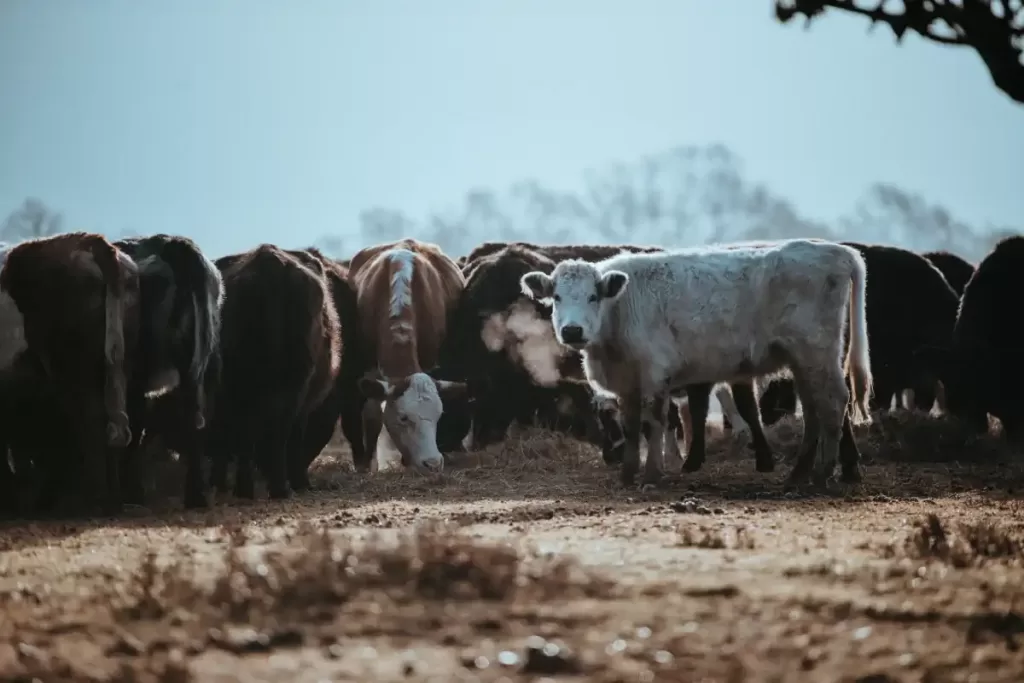
14. There would be greater genetic diversity
The absence of hunting and habitat destruction would allow species to maintain greater genetic diversity. Human activities have often led to the reduction of genetic variation within species, either through selective hunting of specific animal traits or by fragmenting populations into smaller, isolated groups, which limits genetic exchange.
Genetic diversity is a crucial component of a species’ ability to adapt to changing environmental conditions. With a wider range of genetic traits, species are more likely to possess characteristics that enable them to survive shifts in climate, resist diseases, and adapt to changes in their ecosystems. This diversity acts as a buffer against extinction, especially in the face of environmental changes.
In a world without human-induced pressures, species would have larger, more interconnected populations. This would facilitate greater gene flow and allow for a broader range of genetic combinations. Larger gene pools mean more opportunities for beneficial mutations and adaptations to occur, enhancing the overall resilience and adaptability of species.
The preservation of greater genetic diversity would also mean that ecosystems themselves would be more robust and capable of withstanding environmental stressors. Each species, with its unique genetic makeup, contributes to the intricate balance of its ecosystem. Maintaining high levels of genetic diversity across the world’s species would thus be fundamental to the health and stability of global ecosystems.
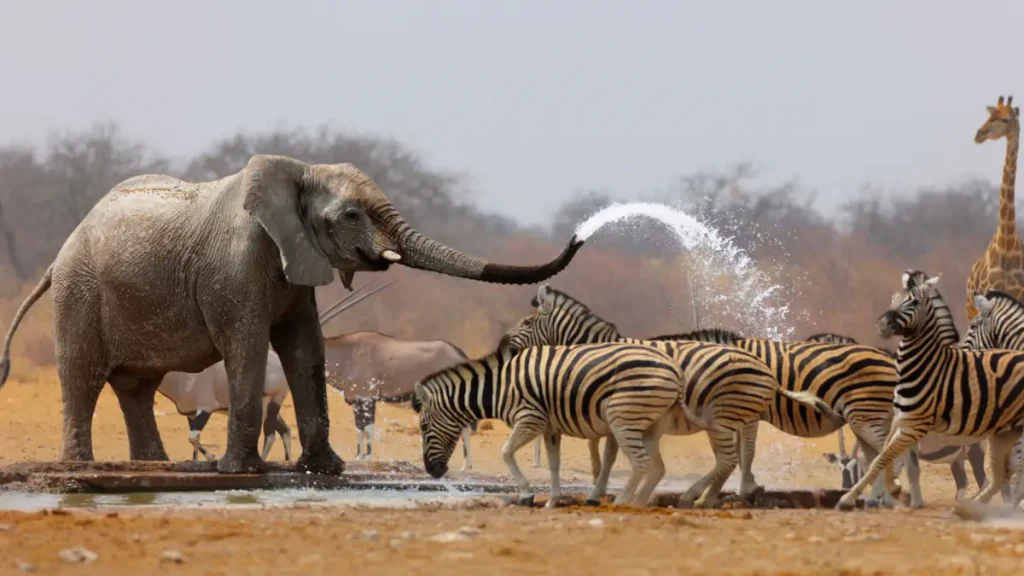
15. Unaltered river courses would support diverse freshwater ecosystems
If humans had never existed, rivers would flow in their natural courses, free from alterations such as dams, diversions, or channelization. The impact of this unaltered state on freshwater ecosystems would be substantial and far-reaching. Rivers, in their natural state, exhibit a dynamic flow, which includes seasonal variations in water levels and flow rates. These natural fluctuations are crucial for maintaining diverse and healthy freshwater ecosystems.
Without dams and other modifications, rivers would meander and change course over time, a natural process that creates a variety of habitats. These habitats support a wide range of aquatic and riparian species, from fish and amphibians to birds and mammals. Natural river dynamics also play a key role in sediment transport and deposition, shaping landscapes and creating fertile floodplains.
The natural flooding of rivers, often curtailed by human-made structures, is essential for the health of both the river and its floodplain. These flood events deposit nutrients, support diverse plant growth and create spawning and feeding grounds for many species. Free-flowing rivers also support the migration and life cycles of many aquatic species, such as salmon, which rely on unimpeded river passages to return to their spawning grounds.
Furthermore, unaltered rivers contribute to the overall ecological connectivity within landscapes, linking ecosystems and allowing species to move and interact across broader areas. This connectivity is vital for genetic exchange and species dispersal, enhancing the resilience and diversity of ecosystems.
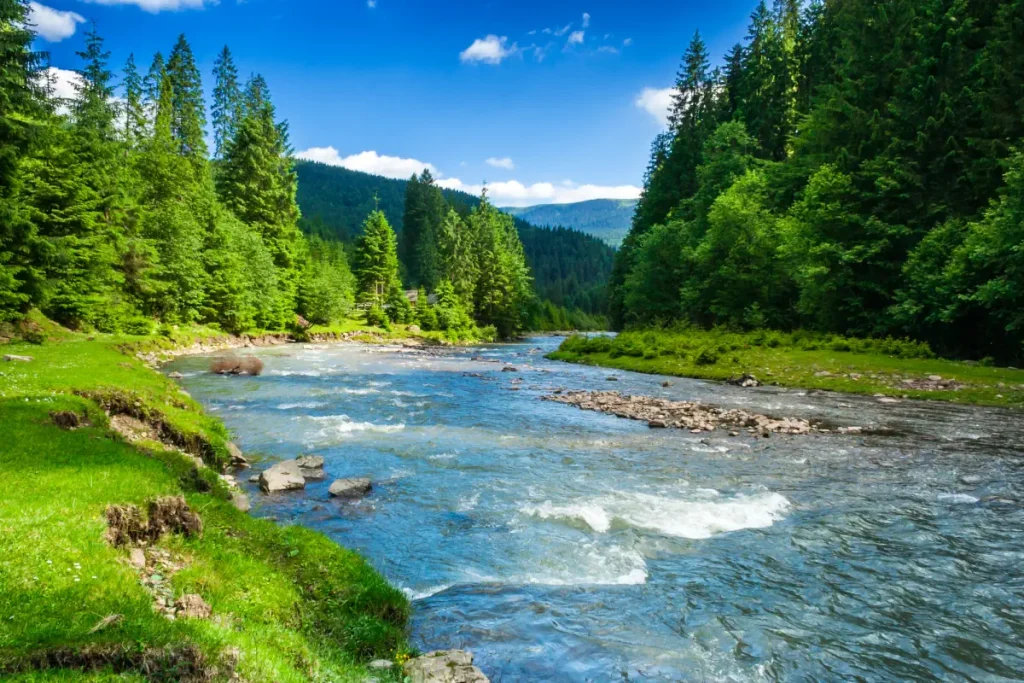
Notes
- The chimpanzee-human last common ancestor, or CHLCA, is the last common ancestor shared by the extant human and Pan (chimpanzee) genera of Hominini. Due to complex hybrid speciation, it is not possible to give a precise estimate of the age of this ancestral individual. While “original divergence” between populations may have occurred as early as 13 million years ago (Miocene), hybridization may have been ongoing until as recently as 4 million years ago (Pliocene).
- The Serengeti hosts the largest terrestrial mammal migration in the world, which helps secure it as one of the Seven Natural Wonders of Africa and one of the ten natural travel wonders of the world. It is located in northern Tanzania and extends to south-western Kenya. The Serengeti is also renowned for its large lion population and is one of the best places to observe lions in their natural environment. The region contains the Serengeti National Park in Tanzania and several game reserves. Approximately 70 large mammal species and 500 bird species are found there. This high diversity is a function of diverse habitats, including riverine forests, swamps, kopjes, grasslands, and woodlands. Blue wildebeests, gazelles, zebras, and buffalos are some of the commonly found large mammals in the region.
Sources
- Chimpanzee–human last common ancestor on Wikipedia
- Serengeti on
Wikipedia - “Without humans, the whole world would look like Serengeti” on Aarhus Universitet Science and Technology web page
- How Many Elephants are Left in the World in 2025? - August 17, 2025
- Moon Landings: All-Time List [1966-2025] - February 2, 2025
- What Is Max-Q and Why Is It Important During Rocket Launches? - January 16, 2025
